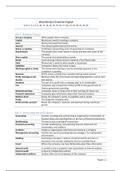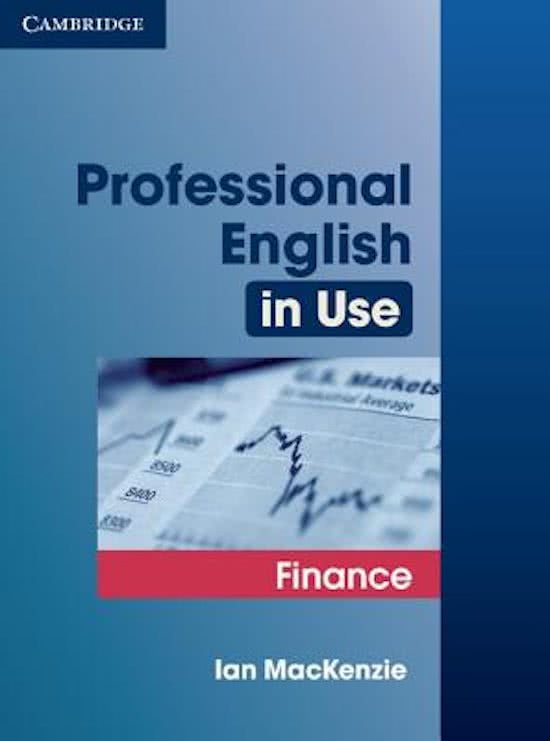Samenvatting
Summary Professional English in Use woordenlijst unit 2, 3, 4, 7, 9, 10, 11, 12, 13, 14, 15, 16, 17, 18, 22, 23, 24, 41, 42, 43
- Instelling
- Hogeschool Windesheim (HW)
Professional English in Use, geschreven door Ian MacKenzie. Een woordenlijst van de volgende units: 2, 3, 4, 7, 9, 10, 11, 12, 13, 14, 15, 16, 17, 18, 22, 23, 24, 41, 42, 43. Dit is een woordenlijst voor het vak 'Financial English' voor de opleiding Finance & Control op Windesheim Zwolle voor het 2...
[Meer zien]





